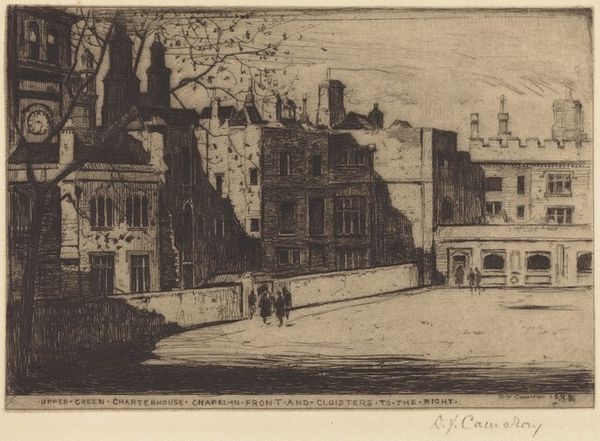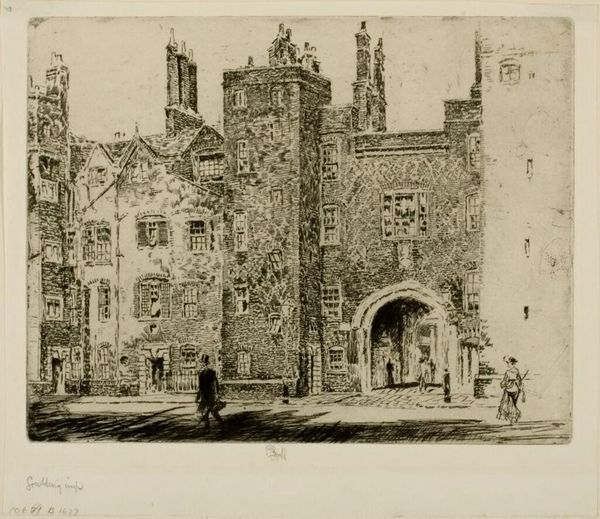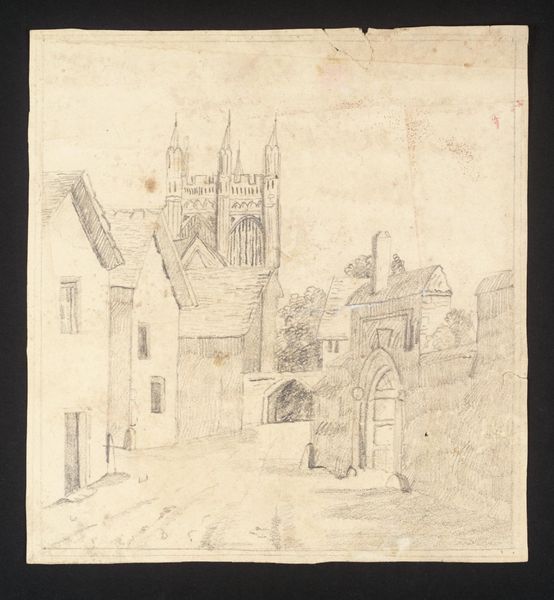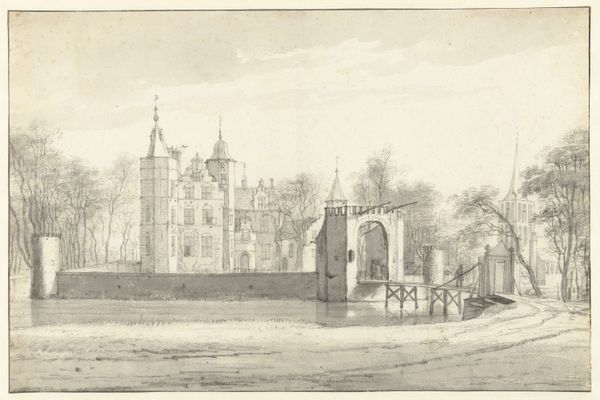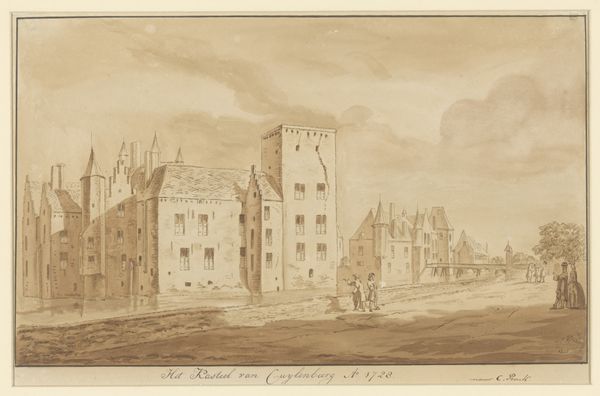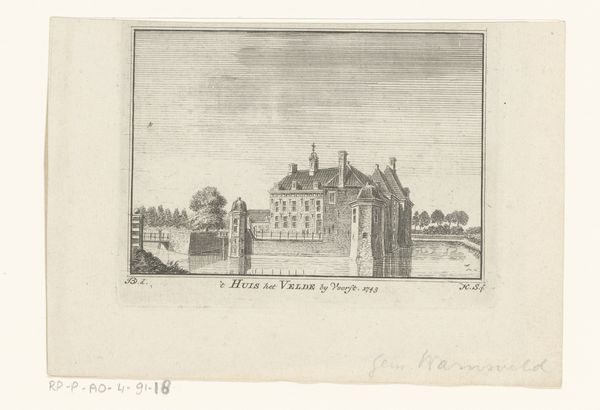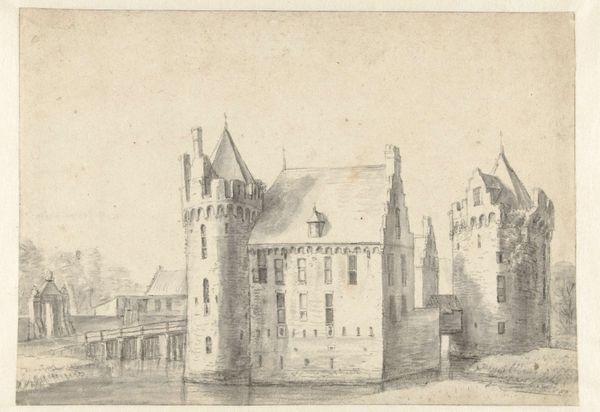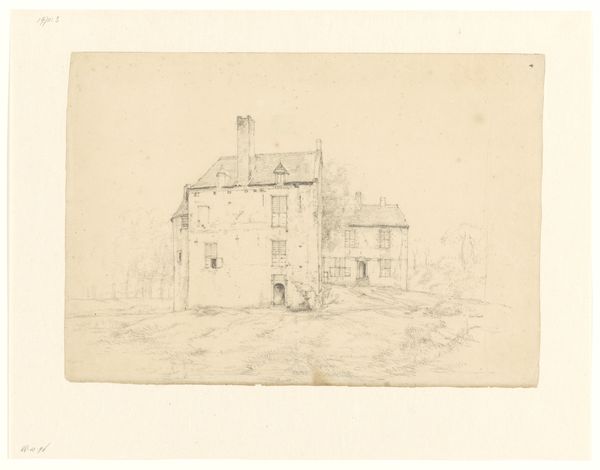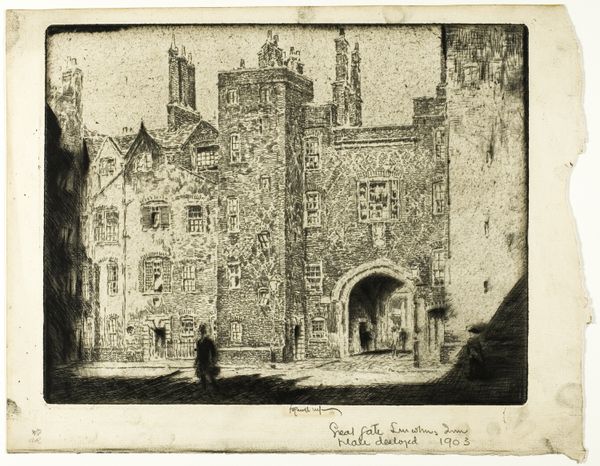
Dimensions: 7 7/8 x 9 15/16 in. (20 x 25.24 cm) (plate)8 5/8 x 10 13/16 in. (21.91 x 27.46 cm) (sheet)
Copyright: No Copyright - United States
Curator: Joseph Pennell created this etching, "Entrance to the Charterhouse," in 1907. It resides here at the Minneapolis Institute of Art. What's your immediate reaction? Editor: There’s a certain…gentility about it. The sepia tones and sketchy lines give the building a feeling of faded grandeur. I immediately think of English boarding schools, whispers of secrets in ancient halls. Curator: It certainly evokes a particular mood, and Pennell, steeped in Impressionist aesthetics, captured that. We see the architecture almost veiled in atmosphere, the light soft and diffused. But the Charterhouse itself holds a deeper resonance. Editor: How so? I’m interested to learn more. I suppose my own read of the work focused too heavily on the image rather than what that image historically and socially embodies. Curator: The Charterhouse began as a Carthusian monastery in the 14th century, during a period of great religious upheaval and the Black Death. After the dissolution of the monasteries under Henry VIII, it transitioned through private ownership to become an almshouse and school. Its history is deeply intertwined with power, charity, and education. Editor: That transformation speaks volumes, doesn’t it? The shift from religious isolation to a place of refuge and learning embodies England's own turbulent socio-political evolution. Pennell chose a fascinating subject—an image pregnant with layered meanings about class, philanthropy, and the role of institutions. Curator: Indeed. And Pennell's technique – the delicate etching – complements that. It’s not a bombastic, heroic representation, but rather a subtle observation, fitting for an institution that evolved rather than radically changed. It invites us to consider what remnants of power linger within such a space. Editor: Yes, and the somewhat ethereal quality almost asks us to see beyond the brick and mortar. There are certainly ongoing questions about access, privilege, and who gets to participate in those legacies embodied by the Charterhouse to this very day. I will always prefer a critical read that emphasizes themes over aesthetic conventions, any day. Curator: And the dialogue is essential. Seeing the beautiful rendering combined with social reflection offers a broader and far more textured narrative about place and history. Editor: Exactly. By illuminating both the aesthetic beauty and the historical implications, Pennell’s work continues to resonate today. Thank you for sharing your insight on the complex layers represented in this etching.
Comments
No comments
Be the first to comment and join the conversation on the ultimate creative platform.
